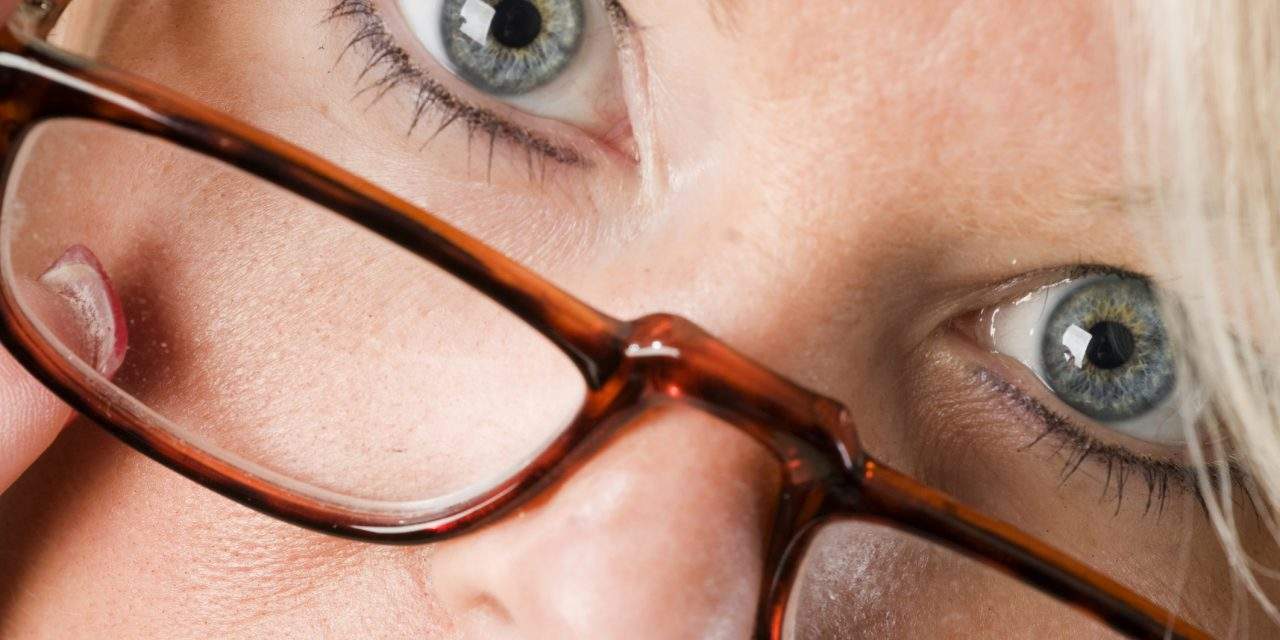How can you prevent these four common eye problems?
You can take a number of steps to prevent eye problems, such as dry eye or macular degeneration, as you age. Here we outline what some common eye issues are, and how you can overcome them.
Clear and comfortable vision is something most of us take for granted. Whether reading an email or keeping up with the children and grandchildren, we all need good eyesight to put our best foot forward – and not fall over!
As we age, a number of changes may occur that can contribute to reduced eyesight or irreversible vision loss.
Dry eye
A very common age-related change is ocular dryness, also known as ‘dry eye’. You might notice this as stinging, burning, itching, scratchy, tired or bloodshot eyes.
Often we just say it’s too little sleep or too much stress. However, tear production tends to diminish as we get older, particularly in women after menopause, leaving eyes more vulnerable to drying out.
Eyes can also dry out with certain medications, such as antihistamines, diuretics and pain killers, and in certain medical conditions, such as diabetes and rheumatoid arthritis.
Sometimes dry eyes can be caused by changes in the eye’s surface, called a pterygium. The exact cause is unknown, but it is more common in men and is associated with excessive exposure to UV rays, sand and wind (the typical Australian beach environment).
The best prevention is wearing effective sunglasses that wrap around or have side shields.
You can easily treat dry eye with lubricating eye drops, many of which are available over the counter. An optometrist, ophthalmologist or chemist can help find the right solution for your needs.
Cataracts
Cataracts are opacities in the eye’s lens that obstruct the passage of light. As we age, many of us will experience a degree of vision loss due to cataracts, which typically progress very slowly.
Because they distort the lens, an early sign of a cataract forming may be short-sightedness. Yellowing of the lens can also reduce the perception of blue colors.
A number of different factors influence our chances of developing cataracts in our aging eyes.
The most common preventable cause of cataracts is diabetes. Exposure to ultraviolet and infrared rays from sunlight also contributes to cataracts developing. Consequently, UV-B protecting sunglasses, wearing a brimmed hat and avoiding direct sunlight at the peak hours of solar radiation are important ways to reduce our risk of cataracts.
There are many ways to treat cataracts, including replacing the lens of your eye, but prevention is still a better alternative.
Macular degeneration
Aging in the retina is associated with debris accumulation in focal deposits called drusen.
An excess of drusen, just like an excess of garbage on the street, can disrupt traffic and make it unpleasant for those (cells) living nearby.
An in-growth of new blood vessels in response to the drusen further accelerates the damage and vision loss. When these new vessels bleed or cause the retina to swell, sudden permanent blindness can occur.
Visual impairment is more commonly insidious, however, and often goes undetected until it is quite advanced. This form of damage, called macular degeneration, is a major cause of blindness as we age.
There are several preventable risk factors for the development and progression of macular degeneration, including obesity, high blood pressure, diabetes and smoking.
Research has shown that a low-fat diet rich in antioxidants and omega–3 fatty acids (foods such as green leafy vegetables, whole grains, fish and nuts) appears to reduce the risk of age-related macular damage. A diet high in animal fat, on the other hand, makes vision loss from macular degeneration more likely.
Glaucoma
Another disease that threatens our vision as we get older is glaucoma. This is when painless damage occurs to the nerves that relay signals from the retina to the brain.
Glaucoma causes vision loss that starts in the periphery (tunnel vision) and works its way inward until eventually you lose all vision. This damage most commonly occurs because of raised pressure inside the eyeball.
Important risk factors are age, diabetes and a family history of glaucoma.
There are no special steps we can take to prevent it. However, if you have a ophthalmologist or optometrist perform regular eye checks, they can detect it in its earliest stages, when you can easily treat it. Because there are almost no symptoms until the final stages of the disease, waiting for vision loss to occur may be too late.
Click here for some more practical tips on how to prevent eye problems.
Last reviewed 31/Mar/2017
Editor
Latest posts by Editor (see all)
- Oily fish and diabetes prevention - 04/06/20
- Manage the andropause - 11/12/17
- Testing testosterone levels - 07/12/17







